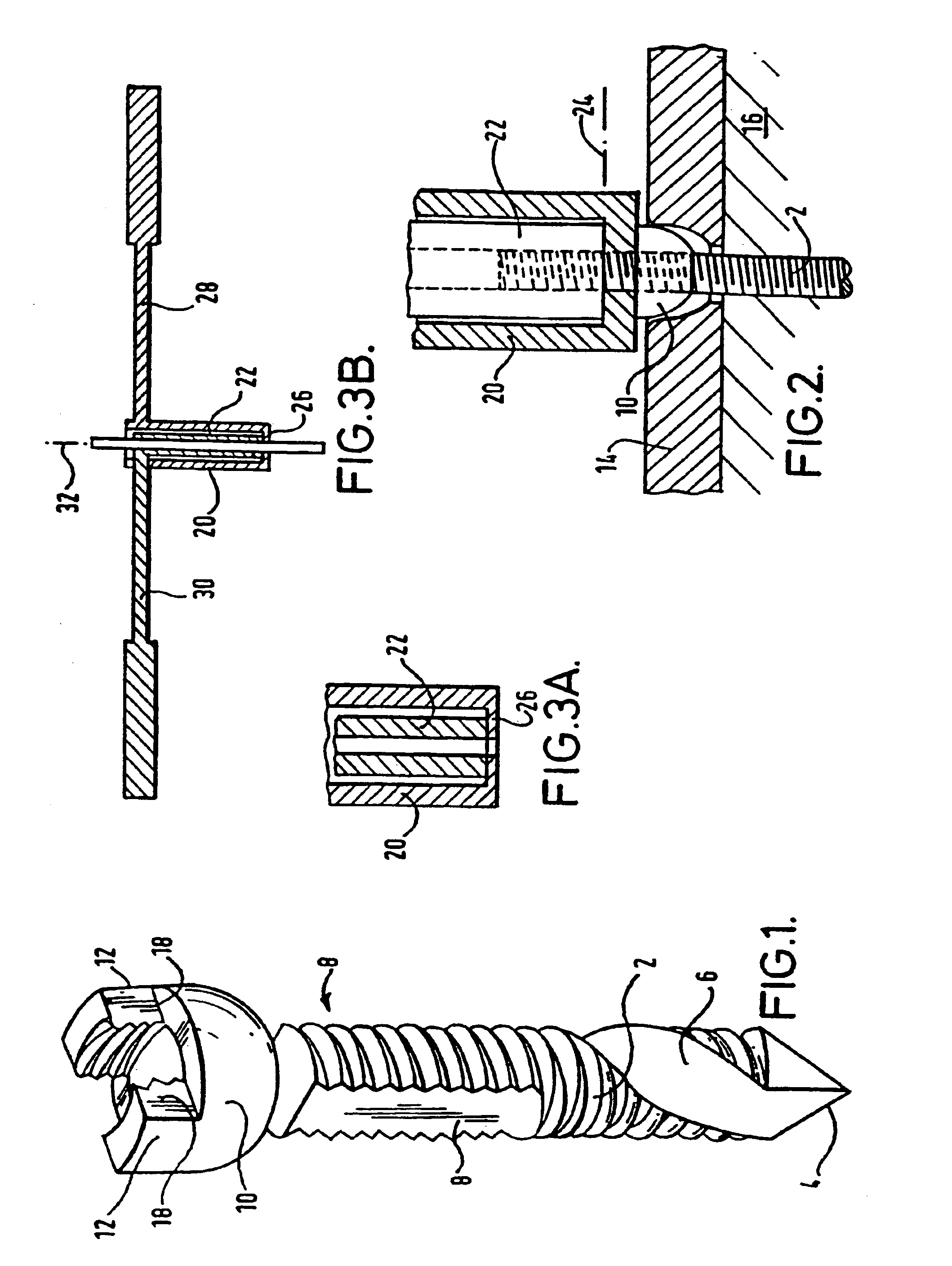Tool for shearing bolts
a technology of shearing bolts and tools, applied in the direction of screws, load-modified fasteners, fastening means, etc., can solve the problem of not being able to tolerate the length of screws projecting from an exposed surface, and achieve the effect of sufficient stability
- Summary
- Abstract
- Description
- Claims
- Application Information
AI Technical Summary
Benefits of technology
Problems solved by technology
Method used
Image
Examples
Embodiment Construction
[0025]The assembly shown in FIG. 1 consists of a screw 2 having a sharp end 4 from which a removal duct 6 extends to flanks 8 cut parallel into opposite sides of the screw. As can be seen, the flanks are cut well below the root of the screw thread. The nut 10 has a generally hemi-spherical base with two upstanding projections 12 on the inner surfaces whereof are formed internal screw threads corresponding to the external thread on the shaft 2. The peripheral extent of each thread section on the projections 12 of the nut is less than the notional periphery length of the thread cut away to form each flank 8 on the shaft 2. Thus, with the respective threads misaligned, the nut 10 can move translationally along the shaft 2 without any engagement between the threads. However, this is not essential. The assembly does of course function quite effectively with a full thread on the nut, requiring rotation of the nut to effect its translational movement, and this can be preferred in some circ...
PUM
 Login to View More
Login to View More Abstract
Description
Claims
Application Information
 Login to View More
Login to View More - R&D
- Intellectual Property
- Life Sciences
- Materials
- Tech Scout
- Unparalleled Data Quality
- Higher Quality Content
- 60% Fewer Hallucinations
Browse by: Latest US Patents, China's latest patents, Technical Efficacy Thesaurus, Application Domain, Technology Topic, Popular Technical Reports.
© 2025 PatSnap. All rights reserved.Legal|Privacy policy|Modern Slavery Act Transparency Statement|Sitemap|About US| Contact US: help@patsnap.com



